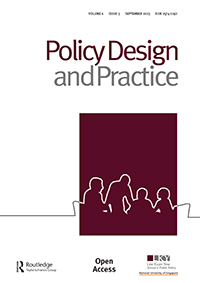Organizing cyber capability across military and intelligence entities: collaboration, separation, or centralization
IF 2.6
Q1 PUBLIC ADMINISTRATION
引用次数: 1
Abstract
Abstract This paper explores how the Netherlands, France, and Norway organize their cyber capabilities at the intersection of intelligence services and military entities and provides recommendations for policy and research development in the field. Drawing out key organizational differences and ambiguities, the analysis identifies three models of organizing military and intelligence relations: A Dutch collaboration model, a French separation model, and a Norwegian centralization model. Despite their divergence in organizing cyber capabilities, the three countries converge on the assumption that both responding to cyber conflict short of war and developing military cyber power are dependent on the skills, information, and infrastructure of intelligence services. This calls for cooperation and coordination across military and intelligence entities. However, it remains unclear whether decision makers have systematically assessed the implications of the organizational structure for the ways in which the two dimensions relate to and shape one another at strategic, tactical, and operational levels. The paper concludes that there is a need for increased political attention and a deliberate approach to how the organizational model allows for the operational cyber capacity to travel from, translate into, and shape intelligence and military entities and to which political implications at both national and international levels.跨军事和情报实体组织网络能力:协作、分离或集中
摘要本文探讨了荷兰、法国和挪威如何在情报部门和军事实体的交叉点组织其网络能力,并为该领域的政策和研究发展提供了建议。分析指出了关键的组织差异和模糊性,确定了三种组织军事和情报关系的模式:荷兰合作模式、法国分离模式和挪威集权模式。尽管三国在组织网络能力方面存在分歧,但他们一致认为,除了战争之外,应对网络冲突和发展军事网络力量都取决于情报部门的技能、信息和基础设施。这需要军事和情报实体之间的合作与协调。然而,目前尚不清楚决策者是否系统地评估了组织结构对这两个层面在战略、战术和行动层面相互联系和塑造的影响。该文件的结论是,有必要增加政治关注,并慎重考虑组织模式如何允许网络作战能力从情报和军事实体出发、转化为情报和军事机构并形成情报和军事组织,以及对国家和国际层面的政治影响。
本文章由计算机程序翻译,如有差异,请以英文原文为准。
求助全文
约1分钟内获得全文
求助全文
来源期刊

Policy Design and Practice
PUBLIC ADMINISTRATION-
CiteScore
10.30
自引率
4.30%
发文量
19
审稿时长
13 weeks
期刊介绍:
 求助内容:
求助内容: 应助结果提醒方式:
应助结果提醒方式:


